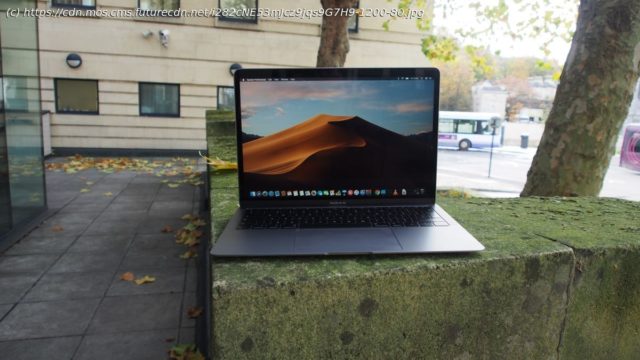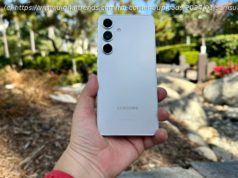The new Apple MacBook Air (2018) is the cheapest way to get your hands on a new Apple laptop. Read our Apple MacBook Air (2018) review to find out if it’s of great value to you in 2019.
Did you know the 2018 MacBook Air isn’t the newest Air on the block? Check out our review of the more recent MacBook Air (2019). The Apple Macbook Air (2018) spent quite a bit of time high on our best Macs as well as our best laptops list, and it did so for good reason. It may have stayed fairly close in design to the original, which started this whole Ultrabook craze. It just comes with some refinements, such as a Retina display, updated keyboard and Touch ID feature, not to mention over 10 hours of battery life. It is still a very viable machine that lives up to the ‘Air’ name. If you’re looking for a MacBook with a Retina display, but want to do so without spending too much money, the Apple Macbook Air (2018) may be the perfect machine for you. Outside of its predecessor, you probably won’t find a cheaper Apple portable that can run the latest macOS. The laptop’s specs aren’t going to be top-of-the-line in 2020, such as its dual-core processor at 1.6GHz, and there are competitors equipped with faster processors. The good news is that it comes at an affordable price. Just expect to spend for upgrading the storage or to invest in an external hard drive, especially since you won’t be able to use a microSD for extra storage – the 2018 comes sans microSD slot. The Apple MacBook Air (2018) is still a great, thin laptop. However, it’s not for everyone. Still, depending on your needs, it might be the perfect choice for you. Because it raises the bar in a number of key areas – the new screen is more stunning than ever, the battery is longer lasting, and the whole thing is lighter and smaller than ever before – you will love the MacBook Air 2018 if you’re a fan of Apple’s lightweight laptop or if you have a much older MacBook Air. However, if you’re looking for a significantly more powerful device compared to previous models or a Windows user looking to switch to the macOS environment for cheaper, then this refresh might be a disappointment. The Apple Macbook Air (2018) is likely to receive decent discounts for both Black Friday and Cyber Monday. We recommend waiting until then to hit that buy button. Black Friday rolls around at the end of November and Cyber Monday is November 30, so you won’t have to wait for long. The MacBook Air 2018 is pricier than any previous model. However, while this 2018 follow up doesn’t match the $999 price of its predecessor, it’s still the cheapest laptop in Apple’s 2019 lineup. For anyone dismayed by Apple’s high (and rising) prices for its devices, that might not be much comfort. At the time of this review, the MacBook Air (2018) started at $1,199 (£1,199, AU$1,849). Note that the 2017 MacBook Air is still available at a lower price on third-party. If you are on a limited budget, third-party sellers are still hawking the 2017 MacBook Air at the same $999 (£949, AU$1,499) price. You’ll have to give up new features like the fingerprint sensor and the higher resolution display, but it’s $200 off, so decide for yourself if it’s a worthy trade-off. However, if you want the latest rendition, you’ll be happy to know that it’s now $100 cheaper at $1,099 (£1,099, AU$1,699). Currently, at that price, you get an 8th-generation Intel Core i5, Intel UHD Graphics 617,8GB of memory and a 128GB SSD. You can configure it with more memory and storage, but the MacBook Air will obviously get pricier from there. You can get up to 16GB of RAM and a 1TB SSD. Additionally, the highest pre-configured MacBook Air goes for $1,299 (£1,299, AU$1,999), which comes with 256GB SSD storage, but otherwise is mostly the same. That’s a price increase of $200 (£200, AU$300) for a bigger SSD. To up the storage to 512GB SSD from the base model will cost you an extra $400 (£400, AU$600), while upgrading to 1TB is a whopping extra $1,200 (£1,200, AU$1,800). Even by Apple’s standards that’s a rather absurd price increase – considering that at that price, you can get a 1TB to 2TB external SSD. You’re better off sticking with the 128GB SSD and purchasing an external storage drive separately. If you want to configure your MacBook Air, it’s best to double the RAM to 16GB at 2,133MHz for an extra $200 (£180, AU$320). No other components are configurable on 2018’s Apple MacBook Air, which means you’re stuck with the same processor and integrated graphics. The above costs also highlight Apple’s crazy-expensive prices for storage. We haven’t tried to dismantle the MacBook Air apart, but we’d wager it’s extremely difficult to open it up and install a larger – and cheaper – SSD yourself. If you don’t need that much storage space, and rely on cloud services for storage, this won’t be too much of an issue. However, for people who need their disk space, it means the MacBook Air can quickly become quite an expensive proposition – unless, as we suggested earlier, you get an external hard drive. You just have to decide whether it’s worth carrying around an extra moving part just to save a couple of hundred dollars, or if it’s better to pay that for convenience. Still, the market for premium $1,000/£1,000 laptops is more packed than ever before, with some incredible machines dominating the price point, mainly spurred by the success of the original MacBook Air. With a price of $1,099 (£1,099, AU$1,699), the MacBook Air 2018 is going toe to toe with impressive Windows alternatives, like the Huawei MateBook X Pro and Dell XPS 13. Both offer more powerful internals and beautiful displays for comparable prices. Where the MacBook Air used to be the undisputed best laptop at this price point, it’s now facing an uphill battle to reclaim that title. Of course, the XPS 13 and MateBook X Pro are only viable alternatives if you’re not married to the macOS. If you’re wedded to macOS and Apple’s ecosystem, then the Apple MacBook Air (2018) offers the most affordable way to get a new MacBook – and its latest refresh, as well as drop in price, definitely gives it better value. One could realistically argue that the MacBook Air spurred Intel and rival laptop makers to create the Ultrabook category of laptops, which were premium devices that put power, style and a thin, lightweight form factor above all else. The original MacBook Air changed the laptop scene back when it was originally unveiled – there’s no getting around that – so, you’d be forgiven for expecting Apple to revolutionize their design just as they did before. If that were the case, prepare to be disappointed. Apple played it safe with the MacBook Air 2018. This laptop is definitely not the market-defining laptop that its predecessor was. However, it does inherit that iconic thin and light design, while still benefiting from some important improvements where it counts. In fact, the new MacBook Air is smaller than the original with dimensions of 11.97 x 8.36 x 0.61 inches, making an already portable laptop even lighter and thinner. And, the MacBook Air case retains the same wedge-shaped design, so it tapers off to 0.16 inches at its thinnest point. As we noted in our initial hands-on review of the new MacBook Air, the new laptop has the same width and depth as the 13-inch MacBook Pro, while being a bit thinner and lighter. Thankfully, the reduced size and weight of the MacBook Air doesn’t mean there’s a deficit in features. You still get a 13.3-inch display (more on that in a sec), and we’ve already mentioned that it’s equipped with faster hardware, including an 8th-generation fanless dual-core processor as well as 8GB of RAM, which can be upped to 16GB.






